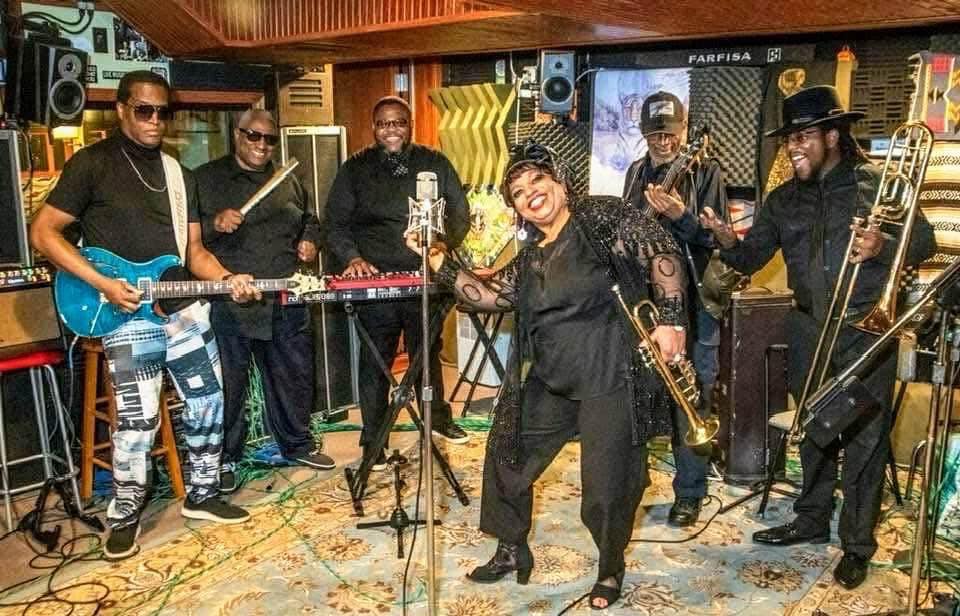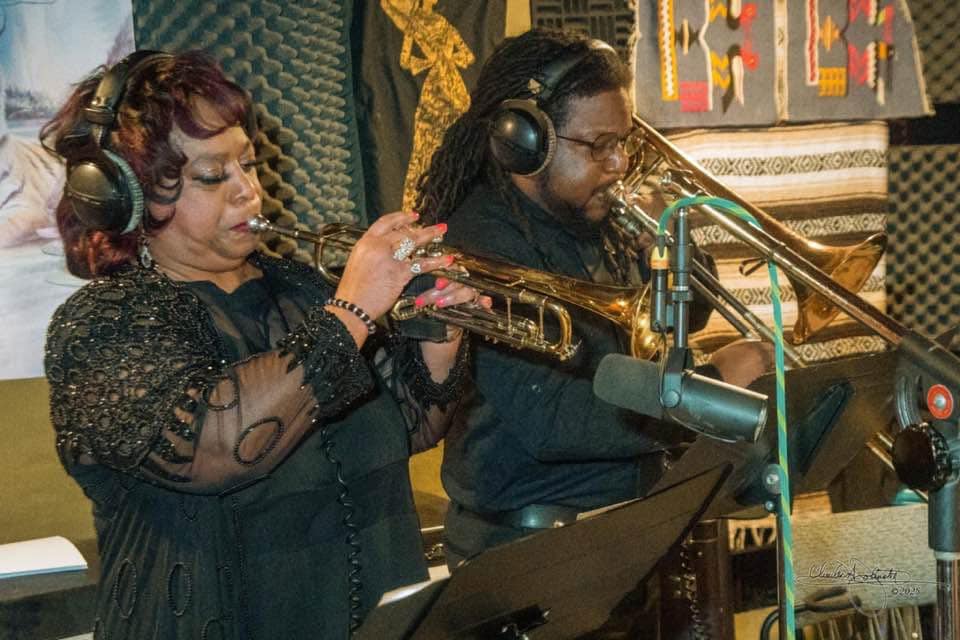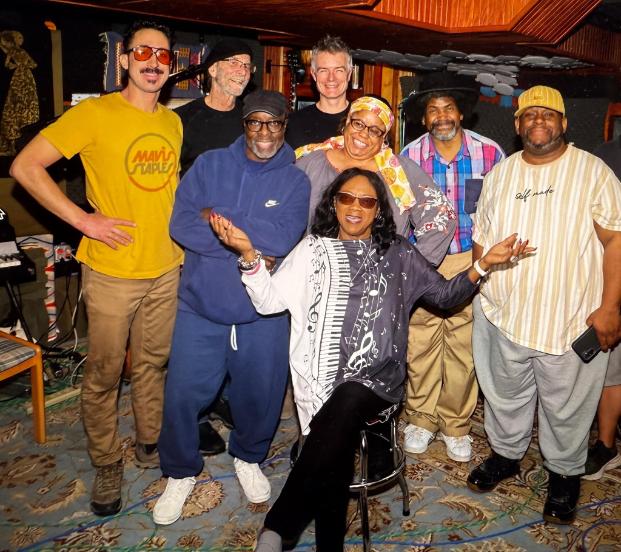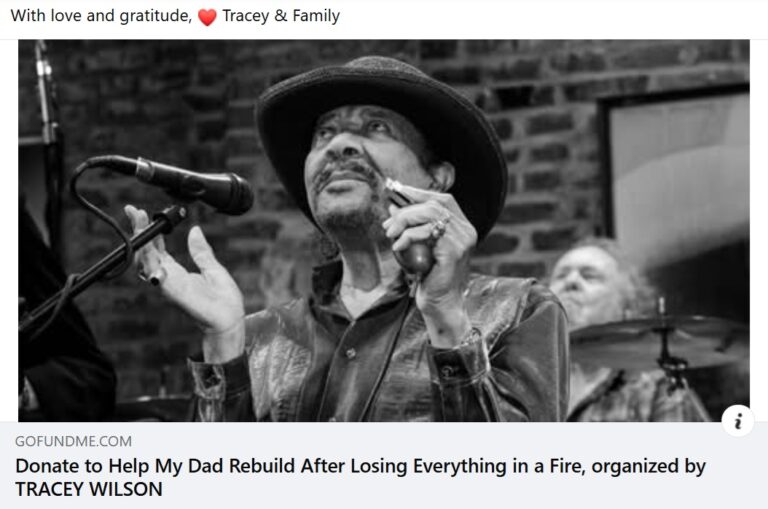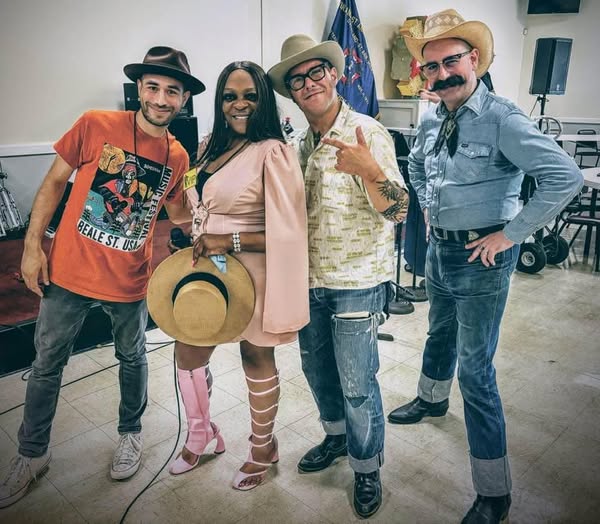St. Louis Blues Society Greenwood Cemetery CD project updates, courtesy of Michael Higgins.
November 19th 2025
From Michael:
“ALL THE GIN IS GONE” – Jimmy Forrest (w/Grant Green) 1959
Been looking forward to this special surprise 🔥❤️!
So many thanks to STL sax master Kendrick Smith and his fabulous quartet including Bernard Terry on bass, Daniel Herrera piano and Ben Dicke on drums. But the kudos don’t stop there because the guest guitarist on this Jimmy Forrest/Grant Green original is none other than “The Rattlesnake” — Matthew Lesch 💯🎶!
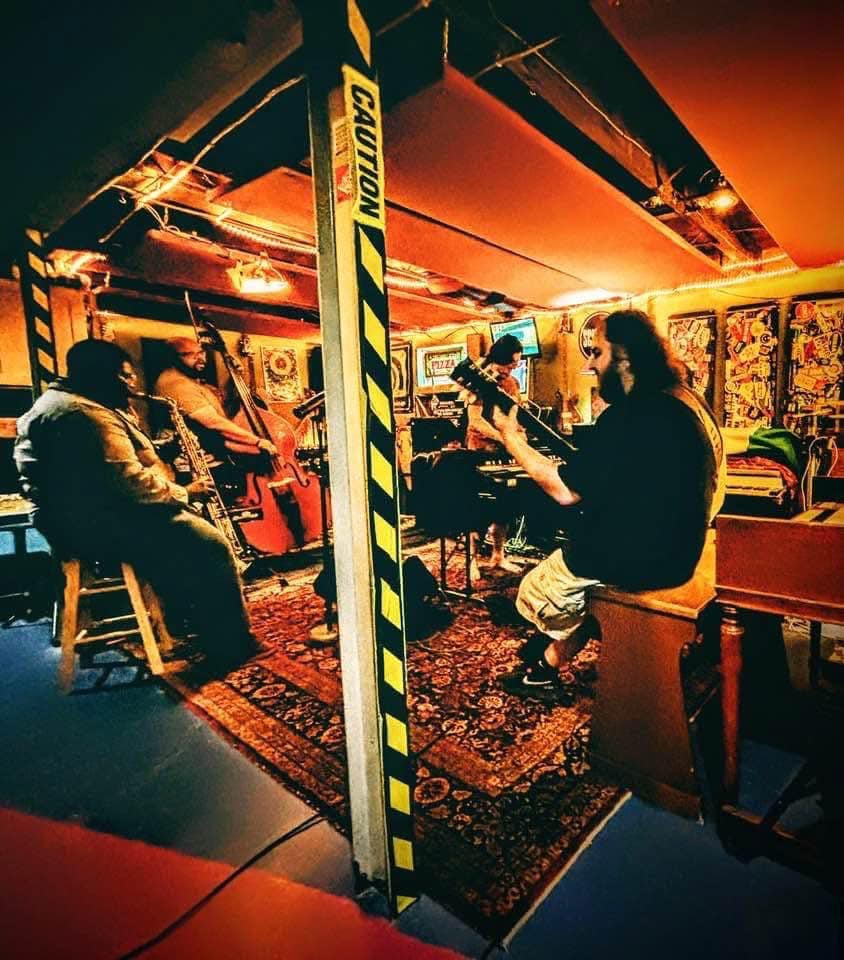

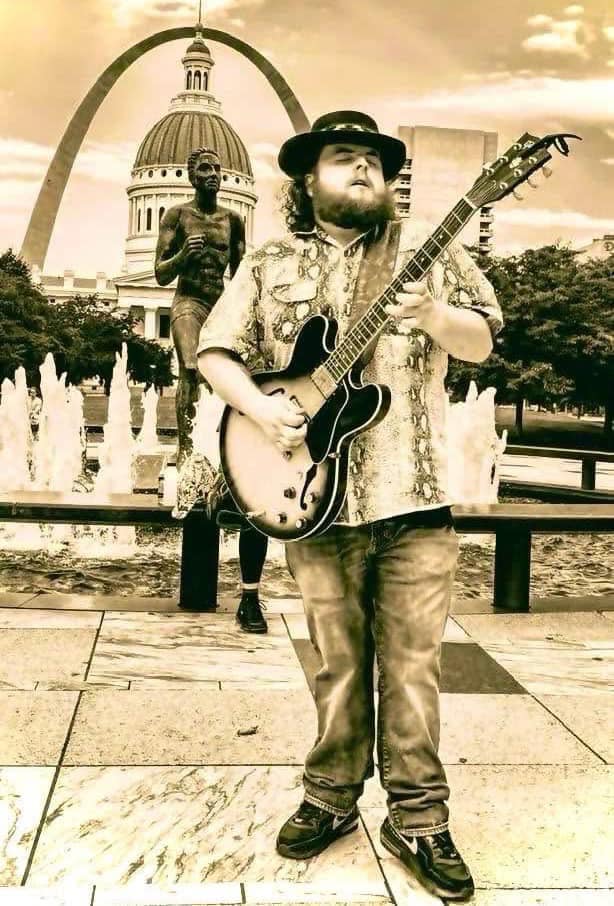
August 28th 2025
From Michael:
Many kudos to Kasimu Taylor and his fabulous Quartet — Eric Slaughter on guitar, Bernard Terry bass and Cannon DeWeese on drums

On June 8, 2025 Andy Coco graciously invited the band to record at his Dogtown Studio for the Greenwood Cemetery CD project.
What a creative delight!
Grant Green remains one of the greatest jazz guitarists in history. Born in St Louis and buried in Greenwood Cemetery, not only was he highly esteemed, but between 1961 and 1965 he was the most recorded jazz artist on the fabled Blue Note record label (and thereby probably on the planet too). He served as both the house guitarist and as leader of his own ensembles.
Recorded in 1970, “The Windjammer” is a latter day Green recording (he passed away in 1979 at the tender age of 43). If you listen to Green’s original version it’s a funky, driving song with Green’s magical guitar, Blue Mitchell’s trumpet with a healthy push via Neal Creque’s organ. The 7 piece band laid it out as if the windjammer — a term for an old cargo ship manned by many masts and sails — was taking off and picking up speed as it burst through oncoming waves.
When Kasimu texted me the night before, he said he was going with a straight quartet. Reading the names, I realized “Holy cow. No keyboards? Wow. This is gonna be interesting”
At the studio Kasimu went through his arrangement with the band. There had been no rehearsals. In fact, after he laid out the melodic template on the studio piano, both Bernard and Eric took time on the keys to mimic Kasimu’s idea. While it sunk through, he also had Eric set up a guitar pedal to create a more looping, ambient echoing guitar effect. As they then started stretching it out, it took me a while to realize this WAS the same song. Slowing it down, the song suddenly became a more calming pastoral effort. The shift focused on Kasimu’s lead flugelhorn (he wasn’t using a trumpet), and the driving organ from the original was now the softer, slower swirling echo of Eric’s pedal guitar.

Right before my eyes and into my ears, Kasimu’s recording — 55 years later — had shifted the viewpoint. Instead of the funky, driving windjammer that had set sail in 1970, the boat was seemingly disappearing over the far horizon. The sun setting on the vista, waves slowly hitting the shore. The elegance of a legacy boat disappearing. Between Kasimu’s lone flugelhorn and Eric’s atmospheric pedal guitar lines, “The Windjammer” was now reinterpreted by some of STL’s best jazz musicians — a half century after STL’s great Grant Green had christened its launching.
Amazing music guys 
*Publishers note – followed by this new version by Kasimu Taylor and bandmates!
May 1st, 2025
From Michael: Many kudos to Marty Abdullah and the mighty Soulard Blues Band! On May 1st they hit David Torretta’s Casa Del Torretta Studio to record the storied blues anthem “Stagger Lee”.
The nefarious “Stag” Lee Shelton was buried in Greenwood Cemetery, St. Louis, MO in 1912. The story of his 1895 Christmas night murder of Billy Lyons at the Bill Curtis Saloon in STL has been a song tale for the ages.
According to lore, “Stag” Lee was a well known pimp who dressed with extra flair. On that fated Christmas night he and Billy Lyons (another underworld businessman) were drinking and gambling when they got into a dispute. Lyons took “Stag” Lee’s Stetson hat and Lee reciprocated by firing a bullet into Lyons’ chest. Shelton was charged and convicted of murder in 1897. He was paroled in 1909 but then returned there in 1911 after a conviction for assault and robbery. He died in a Jefferson City prison in 1912.
The song itself has deep history. Originally published in 1911, Fred Waring’s Pennsylvanians first recorded it in 1923. The list from there is heavy with great blues and jazz musicians — Ma Rainey with Louis Armstrong in 1925, Duke Ellington 1927, Mississippi John Hurt 1928, Cab Calloway 1931, Woody Guthrie 1941, Sidney Bechet 1945, Archibald 1950, Fats Domino, Champion Jack Dupree, Ike & Tina Turner, James Brown, Wilson Pickett, Taj Mahal, Dr John, RL Burnside, Keb Mo and on.
Marty and the band — Art Dwyer bandleader/bass, Tom Maloney guitar, Matt Murdick piano, Kirk Grice drums/congas, Brian John Casserly trombone — opted to lay it down like they’ve always done it live, including backing vocals. Their approach follows the vein of Lloyd Price’s 1958 #1 hit version.
That’s some history there folks ![]()
![]()
![]()
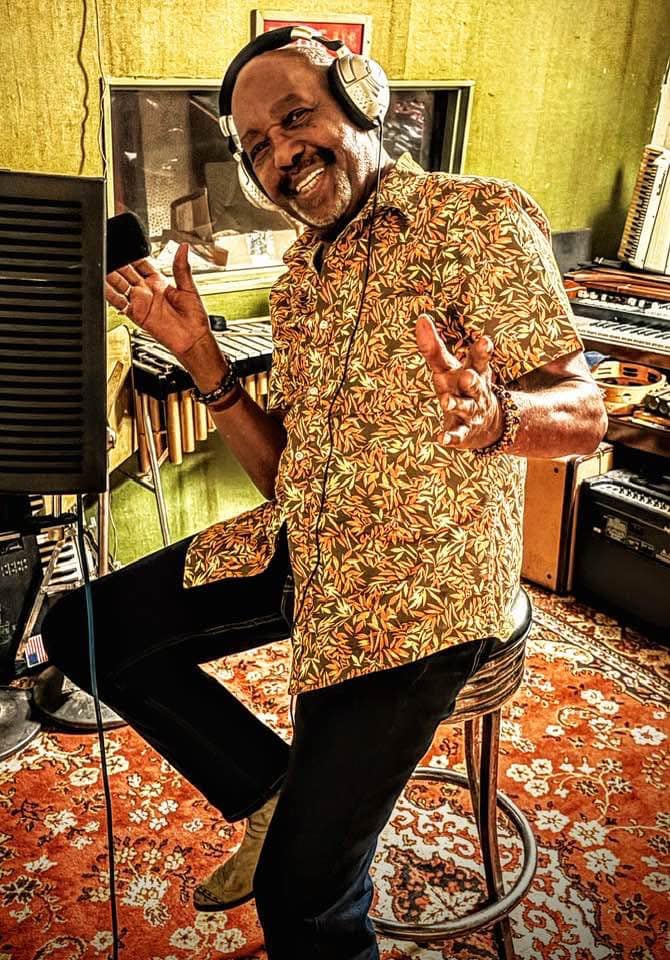
From Michael –
The Greenwood Cemetery CD project has begun ![]() ! First song down, and the bar has been set high
! First song down, and the bar has been set high ![]()
![]()
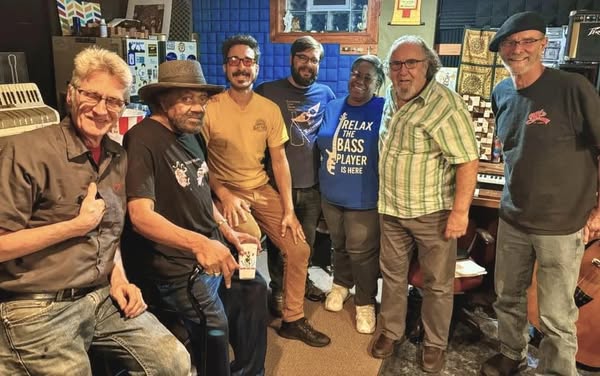
Thank you Boo Boo Davis, L.a. Jones, Ethan Leinwand, Tecora Morgan and Chris Millar! You would never know Ethan and Tecora have never played with Boo and L.A.’s band. From the first note, they sounded like they’ve been playing together for decades.
Great job Paul Niehaus IV![]() Thank you! Everyone was in good spirits, the set up was perfect and it showed. John May so glad you made it and brought your infinite wisdom.
Thank you! Everyone was in good spirits, the set up was perfect and it showed. John May so glad you made it and brought your infinite wisdom.
This was a TREAT to behold and hear. Everyone was locked in and on it.
From Michael – “Many thanks to St Louis blues favorite Eric Mcspadden and the wonderful guitar of Brian T Curran ![]()
![]()

The 1,400 mile long highway dates back to 1926 and was part of the United States very first highway project. Originally it ran 1,716 miles from the US-Canadian border in Minnesota following the lines of the mighty Mississippi River south through the Delta all the way to New Orleans.
The song has been a deep Delta blues staple for good reason. Besides being the oldest known American song about a highway, it’s been recorded by some of the greatest bluesmen ever. Among those who’ve recorded it are Mississippi Fred McDowell, Honeyboy Edwards, Big Joe Williams, Johnny Young, Eddie Burns, Joe McCoy and both James “Son” Thomas and his son, the recently departed Pat Thomas ![]() . These great versions all have that Delta feel with guitar, vocals, and sometimes slide. The metaphorical blues crossroads sits right on US 61 when it crosses Highway 49 in Clarksdale, Mississippi.
. These great versions all have that Delta feel with guitar, vocals, and sometimes slide. The metaphorical blues crossroads sits right on US 61 when it crosses Highway 49 in Clarksdale, Mississippi.
But did you know that both the first and second recorded versions of this blues classic came out of St Louis, Missouri? And not only that: they were recorded as piano blues. No guitar.
The great Roosevelt Sykes recorded the first version in 1932, and a few months later in 1933, The Sparks Brothers recorded their take. Vocalist Milton Sparks (twin brother of pianist Pinetop Sparks) was buried in Greenwood 30 years after their recorded version.
Eric and Brian’s take carries some of that STL flavor. Although there’s no piano, they made the conscious decision to record Brian’s guitar in the key of E following the piano pattern of The Sparks Brothers. With Brian now living in Michigan, he recorded his guitar part there. The track was then sent to Paul Niehaus’s Blue Lotus Studio in St Louis where Eric came in and laid down some great vocals and sweet harp.
